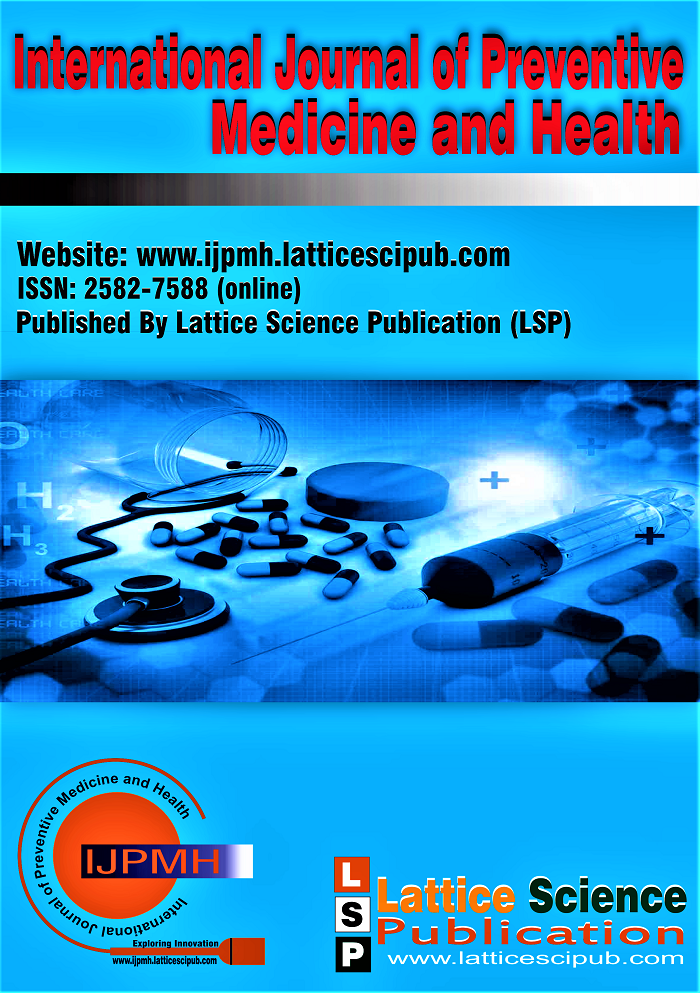Attitude, Knowledge and Perception Among General Public About Tele-Manas Services in Delhi NCR
Main Article Content
Abstract
This study delves into the impact of the National Tele Mental Health Program me of India, known as Tele MANAS, on public access to and perceptions of mental health services in Delhi NCR. Despite India's rich history in mental health awareness, contemporary hurdles such as accessibility and stigma persist. Tele MANAS end eavours to tackle these challenges by offering integrated tele-mental health services across the nation. Through a cross-sectional study involving 207 participants, this research delves into public attitudes, knowledge and awareness regarding Tele MANAS. Findings reveal a notable demand for mental health services but a limited awareness of the program. Notably, social media and television emerged as primary channels for awareness dissemination. While attitudes toward Tele MANAS were generally positive, there remains a need for targeted outreach to engage neutral segments of the population. Analysis uncovered variations in demand, awareness, and perception, highlighting the necessity for tailored strategies. This research holds significant implications for improving Tele MANAS's efficacy and advancing mental health care in India. By understanding the current landscape and addressing gaps in awareness and access, Tele MANAS can better serve the populace, particularly in regions like Delhi NCR. Moreover, the study underscores the importance of ongoing efforts to destigmatize mental health issues and ensure equitable access to quality care for all individuals, regardless of background or demographics.
Downloads
Article Details

This work is licensed under a Creative Commons Attribution-NonCommercial-NoDerivatives 4.0 International License.
How to Cite
References
Ahmed, T., Dumka, A., & Kotwal, A. (2022). Tele MANAS: India’s first 24X7 tele mental health helpline brings new hope for millions. Ind J Mental Health, 9(4), 403-406. https://doi.org/10.30877/IJMH.9.4.2022.402-405
Chatterjee, A., et al. (2021). Telehealth for mental health services in India: An analysis of the challenges and opportunities. Journal of Health Communication, 26 (3), 205-215.
Dandona R, Kumar GA, Dhaliwal RS, Naghavi M, Vos T, Shukla DK, et al. Gender differentials and state variations in suicide deaths in India: the Global Burden of Disease Study 1990–2016. Lancet Pub Health 2018;3(10):e478–89. https://doi.org/10.1016/S2468-2667(18)30138-5
Dash S, Aarthy R, Mohan V. Telemedicine during COVID-19 in India—a new policy and its challenges. J Public Health Policy 2021;42(3):501–9. 12. Health Ministry’s flagship telemedicine service - “eSanjeevani” records 3 Crore tele-consultations [Internet]. [cited 2022 Sep 3]. Available from: https://pib.gov.in/pib.gov.in/Pressreleaseshare.aspx?PRID=1809569https://doi.org/10.1057/s41271-021-00287-w
GBD Compare | IHME Viz Hub [Internet]. [cited 2022 Sep 1]. Available from: http://vizhub.healthdata.org/gbd-compare
Global, regional, and national burden of 12 mental disorders in 204 countries and territories, 1990–2019: a systematic analysis for the Global Burden of Disease Study 2019. Lancet Psychiatry 2022;9(2):137–50. https://doi.org/10.1016/S2215-0366(21)00395-3
Gupta, N., et al. (2019). Mental health in India: A review of the current state. Indian Journal of Psychiatry, 61 (4), 332-340.
Jacob KS, Sharan P, Mirza I, Garrido-Cumbrera M, Seedat S, Mari JJ, et al. Mental health systems in countries: where are we now? The Lancet 2007;370(9592):1061–77. https://doi.org/10.1016/S0140-6736(07)61241-0
Kumar, S., & Bhatnagar, A. (2020). The influence of media on health awareness: A study on health campaigns. Journal of Media and Health, 7 (2), 117-127.
Mathers CD, Loncar D. Projections of global mortality and burden of disease from 2002 to 2030. PLoS Med. 2006;3(11):e442. https://doi.org/10.1371/journal.pmed.0030442
Minges, M. (2017). Mobile technologies and mental health in the Global South: Emerging research and policy priorities. Global Health Action, 10(1), 1337445. https://doi.org/10.1080/16549716.2017.1337445
Patel, V., et al. (2018). The Lancet Commission on global mental health and sustainable development. The Lancet, 392 (10157), 1553-1598. https://doi.org/10.1016/S0140-6736(18)31612-X
Patel V, Saxena S, Lund C, Thornicroft G, Baingana F, Bolton P, et al. The Lancet Commission on global mental health and sustainable development. The Lancet 2018;392(10157):1553–98. https://doi.org/10.1016/S0140-6736(18)31612-X
Ramachandran, P., et al. (2020). Adoption of telehealth services in mental health: Insights from recent research. Journal of Telemedicine and Telecare, 26 (7), 429-437.
Telecommunications Regulatory Authority of India (TRAI). (2019). The Indian Telecom Services Performance Indicators. https://www.trai.gov.in/sites/default/files/PIR_Report_26042019.pdf
The global burden of disease : 2004 update [Internet]. [cited 2022 Sep 1]. Available from: https://www.who.int/publications-detail-redirect/9789241563710
The schizophrenia drug-treatment paradox: pharmacological treatment based on best possible evidence may be hardest to practise in high-income countries. The British Journal of Psychiatry (ONLINE) countries/
Venugopal VC, Mohan A, Chennabasappa LK. Status of mental health and its associated factors among the general populace of India during COVID-19 pandemic. Asia-Pac Psychiatry 2022;14(2):e12412. https://doi.org/10.1111/appy.12412
Siddique, M. R. I., & Kumari, Dr. A. (2023). Mass Media and Promotion of Women’s Health in Capital of Jharkhand. In Indian Journal of Mass Communication and Journalism (Vol. 3, Issue 2, pp. 39–47). https://doi.org/10.54105/ijmcj.c1068.03021223
Predictive Research for Mental Health Disease. (2019). In International Journal of Innovative Technology and Exploring Engineering (Vol. 8, Issue 9S2, pp. 196–199). https://doi.org/10.35940/ijitee.i1038.0789s219
Gupta, D., Markale, A., & Kulkarni, R. (2021). Mental Health Quantifier. In Regular issue (Vol. 10, Issue 5, pp. 187–190). https://doi.org/10.35940/ijeat.e2694.0610521
Applications of Virtual Reality in Mental Health. (2019). In International Journal of Recent Technology and Engineering (Vol. 8, Issue 2S11, pp. 3735–3739). https://doi.org/10.35940/ijrte.b1481.0982s1119
Shala, M., & Çollaku, P. J. (2022). Coping Strategies, Anxiety and Mental Health Among Female Undergraduate Students in Kosova. In International Journal of Management and Humanities (Vol. 8, Issue 9, pp. 19–24). https://doi.org/10.35940/ijmh.i1488.058922





